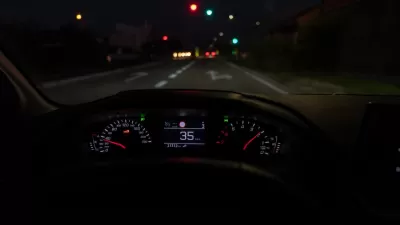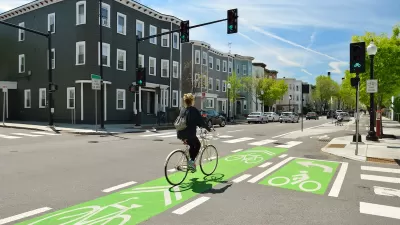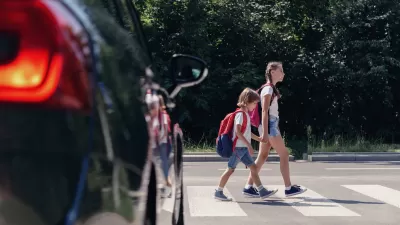Author Jeff Speck discusses the progress made since he first wrote Walkable City–and how far we still have to go to build streets that are safe for all.

With the tenth anniversary of Walkable City coming up, Governing's Jake Blumgart talks with author Jeff Speck "about the stickiness of 2020’s street reforms, why the traffic engineering profession is so resistant to reform, and how remote work can boost urban fortunes."
Speck has seen a lot of change since he first wrote Walkable City, including the mainstreaming of New Urbanism. "Intellectually, and in terms of platforms you see among progressive politicians, there has been a lot of ground gained since 2012," he admits. "But it’s still super hard to get these things done, as we’re seeing now with the reversion of some of these COVID-19 amenities back to the way they were before. Typically, a minority of people who speak loudly are pretty effective in overruling majority public opinion in favor of more walkable places."
When it comes to fears that the many city dwellers who bought cars during the pandemic will add to urban congestion, Speck says "[t]he number of cars on the street is an outcome of the number of lanes we put on the street in congested cities. The number of cars that we see in our cities will be determined by people’s willingness to put up with congestion, not by any other factor." Additionally, "[a]s people come back to transit, but also continue to take advantage of Zoom, you’re going to see an equilibrium emerge which hopefully means fewer car trips than before."
Despite the proven link between widened roads and increased traffic known as induced demand, Speck says, the engineering establishment hasn't caught up, with "maintenance" projects easily turning into widening projects. "Often, fixing a road is a Trojan horse for widening the road." According to Speck, part of the confusion about pedestrian safety "surrounds the fact that street design as a profession evolved out of highway design. The manual that all the engineers use has 'highway' in its title, even though it’s used to design local streets. What makes a highway safe is absence of potential for conflict, absence of friction. That’s the opposite of what makes a street safe."
Speck also discusses the importance of slowing cars through reversing one-way streets, the institutional barriers to reducing or eliminating parking requirements, and the importance of creating truly pedestrian-friendly spaces.
FULL STORY: Vehicles Are Still Firmly in Control of City Streets

Alabama: Trump Terminates Settlements for Black Communities Harmed By Raw Sewage
Trump deemed the landmark civil rights agreement “illegal DEI and environmental justice policy.”

Study: Maui’s Plan to Convert Vacation Rentals to Long-Term Housing Could Cause Nearly $1 Billion Economic Loss
The plan would reduce visitor accommodation by 25% resulting in 1,900 jobs lost.

Planetizen Federal Action Tracker
A weekly monitor of how Trump’s orders and actions are impacting planners and planning in America.

Wind Energy on the Rise Despite Federal Policy Reversal
The Trump administration is revoking federal support for renewable energy, but demand for new projects continues unabated.

Passengers Flock to Caltrain After Electrification
The new electric trains are running faster and more reliably, leading to strong ridership growth on the Bay Area rail system.

Texas Churches Rally Behind ‘Yes in God’s Back Yard’ Legislation
Religious leaders want the state to reduce zoning regulations to streamline leasing church-owned land to housing developers.
Urban Design for Planners 1: Software Tools
This six-course series explores essential urban design concepts using open source software and equips planners with the tools they need to participate fully in the urban design process.
Planning for Universal Design
Learn the tools for implementing Universal Design in planning regulations.
Caltrans
Smith Gee Studio
Institute for Housing and Urban Development Studies (IHS)
City of Grandview
Harvard GSD Executive Education
Toledo-Lucas County Plan Commissions
Salt Lake City
NYU Wagner Graduate School of Public Service





























